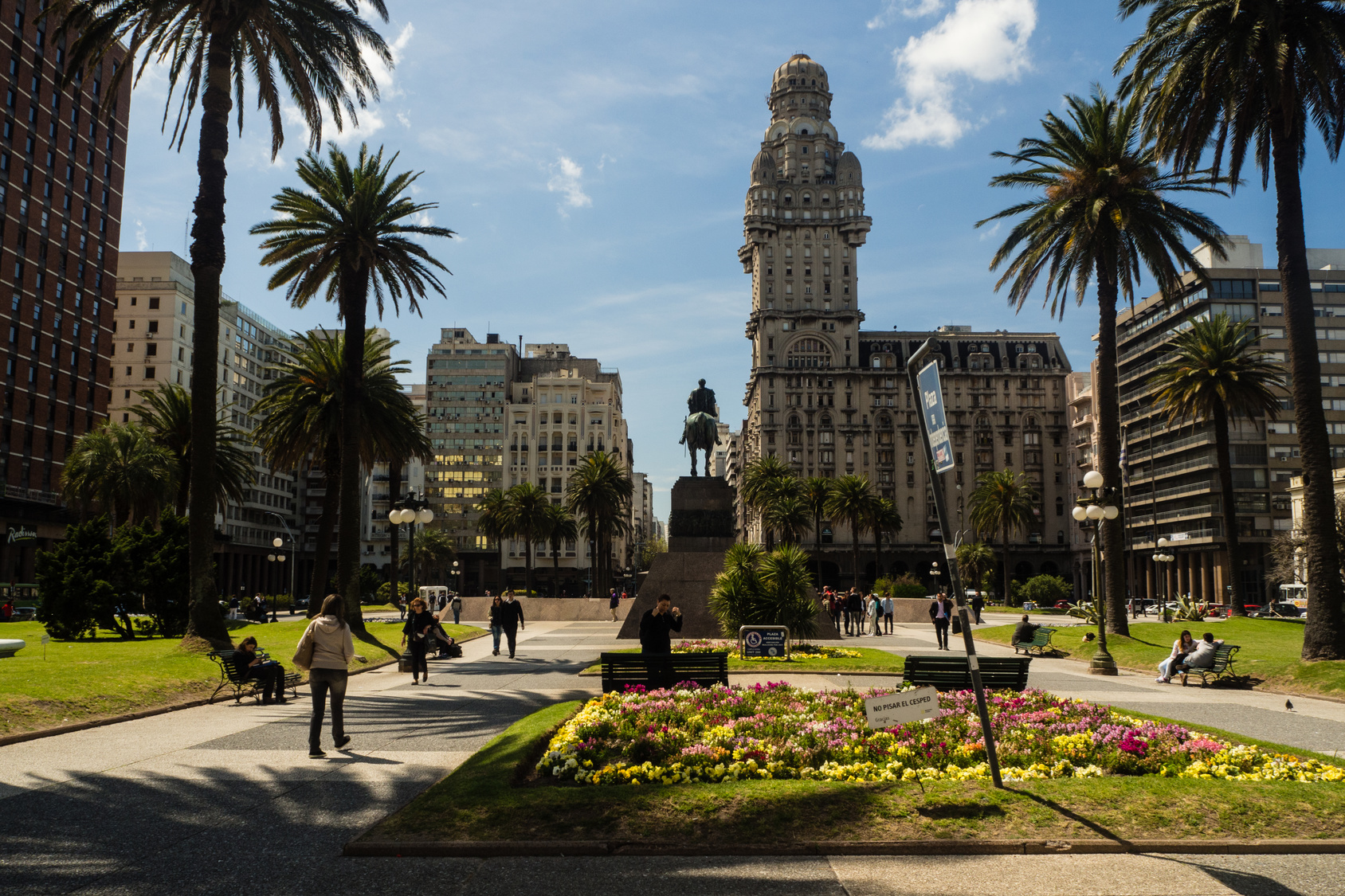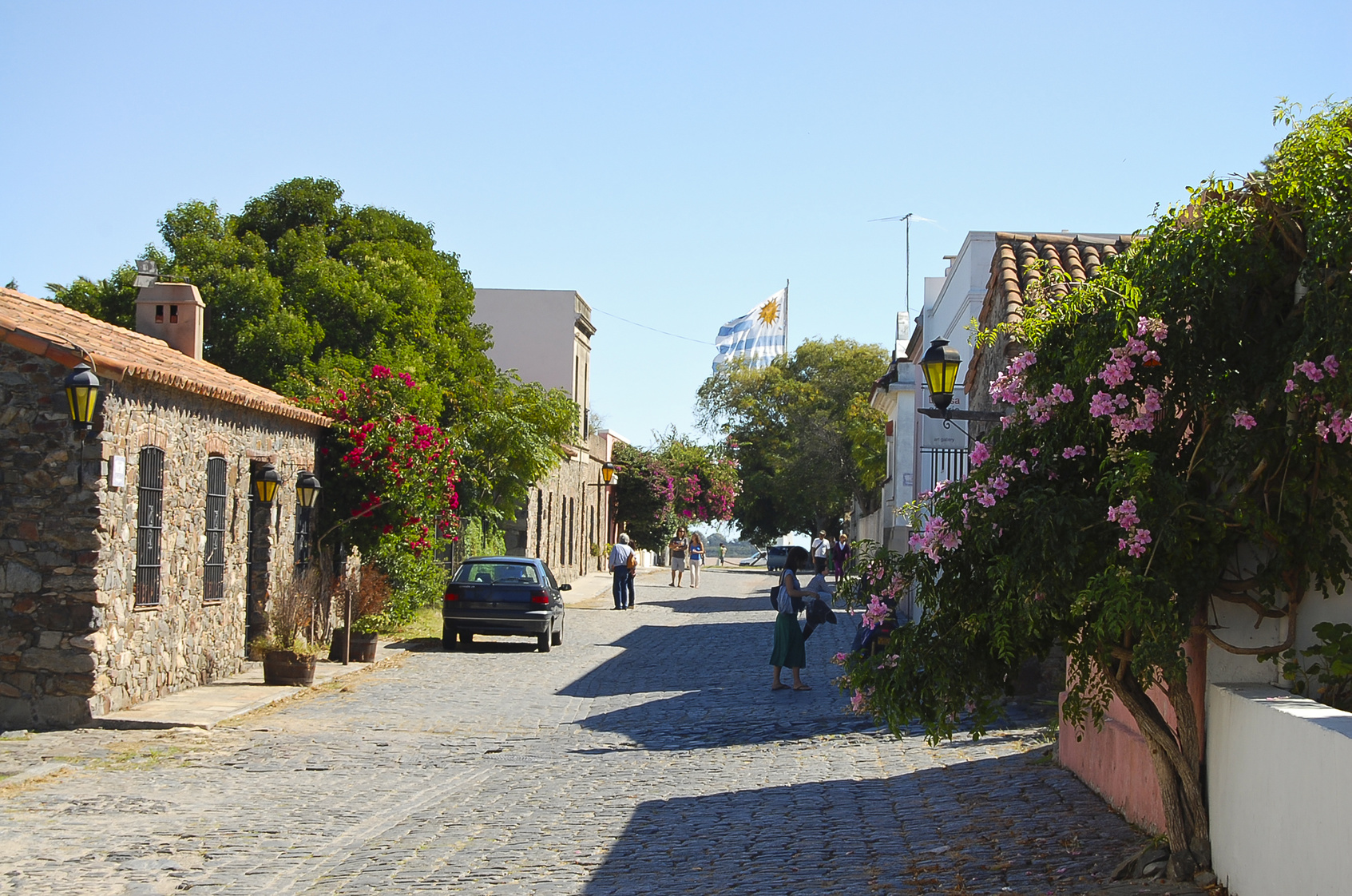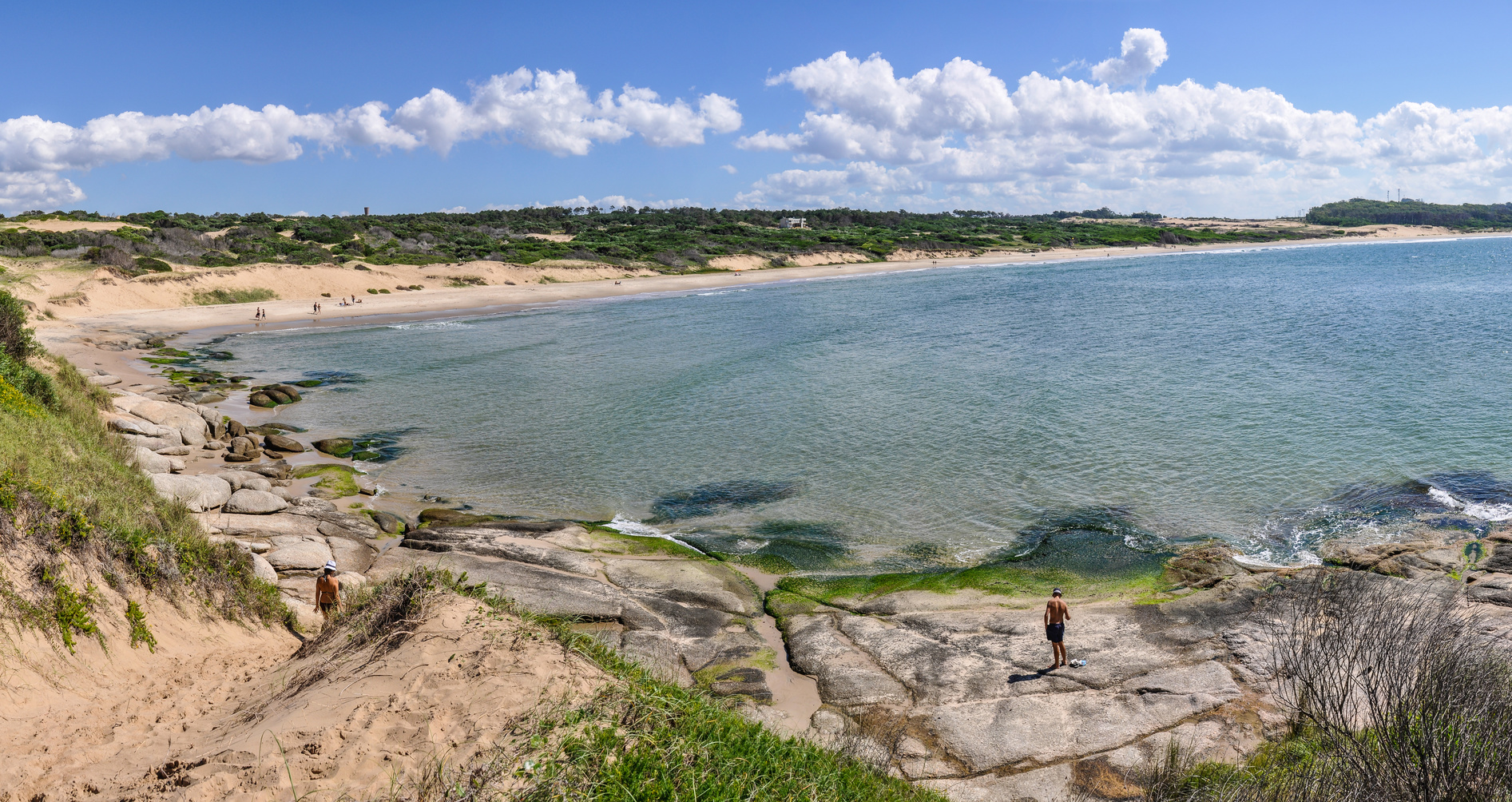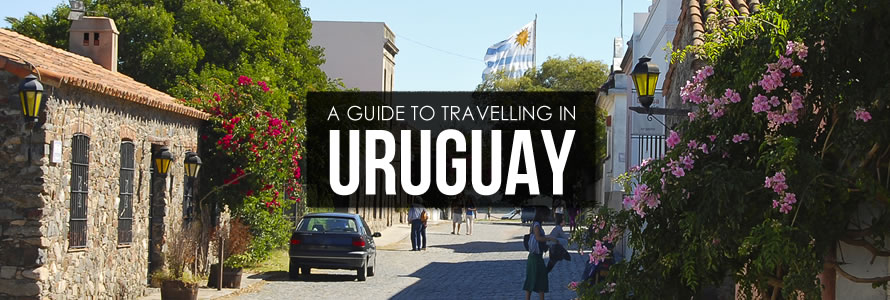Home to the southernmost capital city on the American continent, compact Uruguay (South America’s smallest country after Suriname) is bordered by Brazil and Argentina and has long lived in the shadow of both of these traveller favourites. Tourism on a larger scale is yet to arrive here although Uruguay as a holiday destination has long been popular with both Brazilians and Argentinians.
Despite the fact that Uruguay often gets overlooked as a Latin American destination, its small size which makes it ideal for easy exploration, cosmopolitan capital, colonial leftovers, fascinating fauna and 660 km of coast make it a country that has plenty going for it. Additionally, unlike many of its South or Central American cousins, Uruguay enjoys a culture known for its progressive thinking (women had the right to vote here before those in France), stability and low crime rates which mean Western visitors will find it significantly less challenging than many other South American countries.

Quite how you spend your time is up to you with plenty of choices including lazing on beautiful beaches, riding the waves on a surf board, horse-trekking ‘gaucho’ style in the empty interior hills, partying or celebrity-spotting in glamorous Punta del Este or easing aches and pains in natural hot-springs. The history-passionate can fill their boots exploring a range of sites which showcase the nation’s colonial heritage with influences left over from the Spanish, the Portuguese, the Brazilians and the British.
For now Uruguay barely registers on the backpacking radar but it is unlikely it will stay that way forever so perhaps now is the time to make your way there.
Visas
If you are lucky enough to be a citizen of certain countries you can enter Uruguay without having to apply for a visa in advance. Passport holders of more than 70 countries which include Australia, New Zealand, USA, Canada, UK and most western European nations are granted a 90 day tourist card on arrival in Uruguay. This can be extended for another 90 day period.
Weather & Seasons in Uruguay
Uruguay sits in the Southern Hemisphere which means its winter months are June, July and August and its summer months December, January and February. Its fairly southern latitude also means it experiences pronounced seasons unlike those countries which are nearer the Equator.
With an absence of any extreme terrain such as large deserts or high mountains, Uruguay’s weather (temperatures and rainfall) remains fairly uniform throughout the country. This same lack of mountains is also the reason why Uruguay is sometimes prone to strong winds which come from the ocean especially in summer. Autumn has the highest rainfall although winter has more frequent periods of rain.
Average temperature lows and highs are:
Spring – lows 7 to 12º C/highs 17 to 23º C
Summer – lows 15 to 17º C/highs 26 to 28º C
Autumn – lows 9 to 15º C/highs 18 to 26º C
Winter – lows 6º C/highs 14 to 15º C
Severe cold is not really something you need to worry about in Uruguay although you can expect sub zero temperatures in certain places such as Melo City in winter.
Although you are unlikely to encounter too many tourists in Uruguay it is a favourite holiday escape for Brazilians and Argentinians who can be found in their hordes in beach areas in summertime.
Language
Spanish is Uruguay’s principal language with Uruguayan Portuguese serving as a different native language for a small portion of the population. A hybrid of Spanish and Portuguese – known as Portuñol – is also spoken in the north. Outside of the principal tourist areas English speakers can be hard to find.
Money Matters in Uruguay
Compared to other Latin American countries Uruguay is not a cheap destination and actually ranks currently as the most expensive place to visit in South America. Prices are especially high during the summer months when the country is flooded by holidaying Brazilians and Argentineans with cash to splash. The Peso is the country’s currency – often written using the same dollar symbol as the US. ATMs can be found just about everywhere and as a well-developed country credit cards are widely accepted too.
Culture & Cultural Issues in Uruguay
Almost 9 out of every 10 Uruguayans can trace their descent back to Europe with the vast majority claiming Spanish or Italian heritage. This means much of Uruguay’s culture is coloured with European influences making it appear much more familiar to its Westernised visitors and happily reducing the chances of making cultural faux pas.
One strong symbol of the country’s culture (shared with Argentina) is the gaucho – Uruguay’s equivalent in many ways to the cowboy of the US. Featuring heavily in art and literature, folklore and legend the gaucho is both adept horseman and brave adventurer with a dash of the righteous rebel thrown in. If the gaucho culture interests you head to the artefact-filled Museo del Gaucho in Montevideo to get a real feel for what it is all about.
Although around 50% of the population identify as Catholic, religious zeal is much less of a thing than elsewhere in Latin America; Uruguay doesn’t even actually have an official religion.
Uruguay’s Food & Drink
With its heavy Spanish influence dating from the 16th century and a history of Italian immigration which spans almost 200 years Uruguay’s food and drink, not surprisingly, is also full of European influences. Spanish dishes abound and pizza and pasta are found almost everywhere.
The country’s national dish is ‘asado’ – a word which actually describes the preparation of food, somewhat akin to barbecuing. The principal meat of asado is usually beef. Meat plays a big part in the country’s cuisine thanks to its ranching traditions meaning steaks are excellent and comparatively cheap.
Also found elsewhere in Latin America Uruguay is home to the cheap snack known as an empanada – a pastry of varying sizes filled with all kinds of meats, cheese and vegetables.
Where beverages are concerned you will probably not be in Uruguay long before you encounter your first mate drinkers. This tea-like national drink – also hugely popular in Argentina – was traditionally drunk from a hollowed gourd although today you are more likely to see wooden or ceramic vessels with a metal straw. So essential is this drink to the majority of Uruguayans you will commonly see hot water stations dotted everywhere so thermal containers can be topped up.
Accommodation Options in Uruguay
As already mentioned, Uruguay is not a cheap destination which means there are no real budget options for accommodation. Outside of Couchsurfing or free accommodations offered with some volunteer work placements, the most economical options are hostels. These can be easily found all around the coastal areas with the greatest density of choice in Montevideo and Punta del Este.
One accommodation choice for those with a sense of adventure is the estancia or ranch option. Here you can play at horse-riding, cattle-herding cowboys combined with a stay in an old farmhouse. These out-of-the-way ranches are also a good choice for nature lovers, bird watchers or anyone looking for a tranquil retreat.
Bear in mind that all accommodation prices are at a premium during the summer months and with Uruguay’s beaches being a popular choice for holidaying Brazilians and Argentinians it can be quite hard to find any accommodation at all in any price range. This is especially true for the first two weeks of the year.
Safety
Of 163 countries Uruguay ranks in 35th place on the Global Peace Index which makes it typically safer than either the US or the UK. This ranking also means, of the entire American continent, only Costa Rica and Canada rank higher and excepting Cuba it has Latin America’s lowest violent crime rate.
All of these figures don’t of course mean the country is crime-free but, with the normal precautionary measures you would practice anywhere, you stand a good chance of keeping any visit here trouble- or incident-free. The big cities – especially the capital Montevideo – have the usual urban spates of pick-pocketing, theft and opportunistic crime.
As a well-developed country the public healthcare standards are high, tap water safe to drink outside of isolated rural areas and sanitation levels are significantly better than you might find elsewhere in Latin America. This means many of the travel health issues typically related to poor hygiene are not a problem here and, generally, no specific vaccinations, other than Tetanus (if you haven’t had a booster within the last 10 years), are required for Uruguay. As always though it pays to check with a health professional for current advice before setting off on your travels. Dengue is present so normal measures to avoid mosquito bites, such as wearing mosquito repellent, are advised.
Finally, to add even more into Uruguay’s plus column as a safe destination, it is not a country at risk from any large scale natural disasters.
Transport Options in Uruguay
Uruguay is a relatively small country which means getting around to see much of it is typically easy and quick. The distances in question don’t necessitate air travel as they might in other countries. In most cases the internal bus network serves for most longer distance journeys within the country and also for crossing into other bordering countries. Such buses – whose fares are set by the government – are safe, regular and comfortable and typically have on-board Wi-Fi and facilities. Terminals are found in most of the main cities and advance reservations are not usually required.
Local Transport – Taxis, buses and minibuses are the most frequently found forms of shorter distance transport. Taxis are typically metered while the local bus services tend to be high standard in urban areas.
Essential Highlights of Uruguay
La Mano en la Arena – Once you realise that this title translates as ‘The Hand in the Sand’ you will start to get some inkling of what is in store. However this particular hand, made of iron and cement, has been sculpted on an enormous scale and so placed that it appears to be emerging from beneath the sands of Punta del Este’s Playa Brava. Also known as Los Dedos (The Fingers), the Hand was actually the sculpture which won first place in a 1980s art contest for its creator Mario Irarrazabal.
Colonia del Sacramento – Founded by the Portuguese in the 17th century, the old neighbourhood of Colonia is flower-filled, charming and historic and a UNESCO World Heritage-listed site. Arguably the country’s principal tourist attraction, the cobbled streets fringed with colourful colonial houses can all be explored on a walking tour while classic car lovers can keep their eyes peeled for 1950s cars which are far from rare here.

Montevideo – Uruguay’s capital city – Montevideo – is the continent’s southernmost capital and is home to a range of attractions and activities to keep a diverse bunch of visitors happy. Initially Montevideo sprang into being as a Spanish military stronghold way back in the 1700s and was later invaded by Brazil. There are plenty of historical points of interest from these times and more unusual sights in the otherwise historical category include Estadio Centenario – the national team’s football stadium declared as the world’s only football historical monument by FIFA in 1983. Places worth checking out include the Old City, Palacio Salvo and the waterfront area known as Rambla.
Punta del Este – Much loved by holidaying Argentinians, Brazilians and celebrities, this peninsula is home to several of the country’s best beaches. The adventurous head to the Brava side for surfing and such like while those more intent on swimming, snorkelling and beach-lazing tend to stick to the Mansa side. If you enjoy partying or a touch of the high life Punta del Este is the place to go with a plethora of exclusive clubs, top-end restaurants, fancy hotels and a yacht harbour.
Punta del Diablo – Another favourite haunt of holidaying Latinos from neighbouring countries, Punta del Diablo also happens to be the thriving heart of the country’s backpacker crowd. Spacious, clean and sand dune-backed, the beach here is considered one of the country’s best and if you come outside of the peak season you might get to appreciate the laid-back fishing village air which still lingers here. There is plenty of choice for cabanas, small hotels and hostels while the majority of the restaurants and eating places are spread along the waterfront.

National Parks – Uruguay is home to nine national parks where hiking, wildlife watching and nature immersion are all possible. One of these is the beautiful Parque Nacional Santa Teresa – a popular day trip from Punta del Diablo in the country’s south-eastern corner. This protected area is home to plenty of native flora and fauna as well as an 18th century Portuguese (later Spanish) fort and a camp ground for anyone who wants to linger longer.
Isla Gorriti – Plenty of lovely sandy beaches, a handful of places to eat and the ruins of an 18th century fortification can all be found on Isla Gorriti which is just a 15 minute boat ride from Punta del Este.

